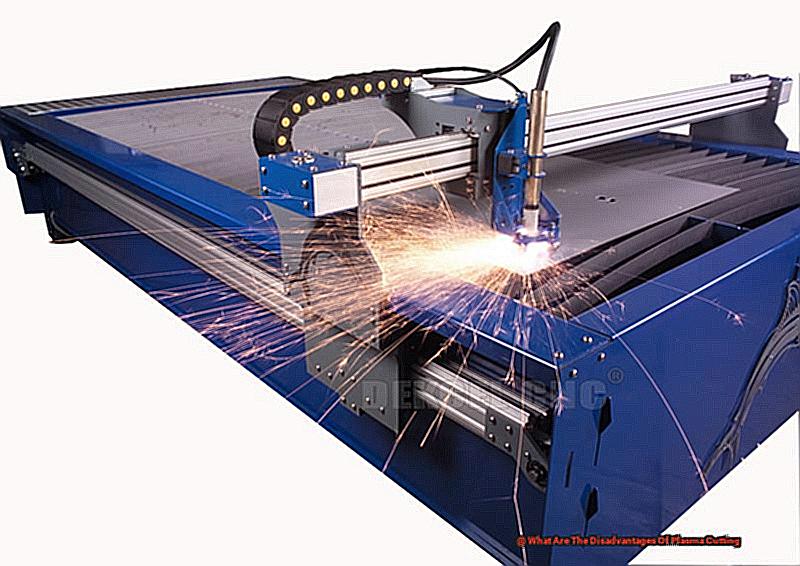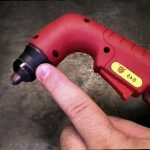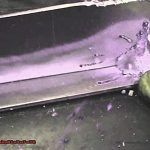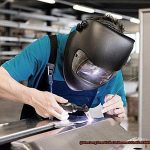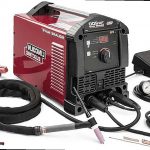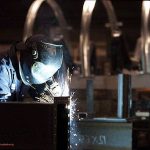If you’re new to welding, you may be wondering what exactly is this technique and why it’s so widely used in the industry. Well, let us enlighten you – this process has been a game-changer for decades, transforming the way metal is joined together.
In its essence, arc spot welding is a form of resistance welding that utilizes an electric current to fuse two pieces of metal. The result?
A robust and long-lasting bond that can withstand extreme temperatures and pressures. But there’s more to it than meets the eye.
So grab your safety gear and join us as we explore this revolutionary technique.
How Are Arc Spot Welds Made?
Contents
- 1 How Are Arc Spot Welds Made?
- 2 What are Weld Washers?
- 3 Should Weld Washers Be Used for All Deck Welding?
- 4 What is the Most Common Filler Metal?
- 5 What Welding Parameters Should be Used?
- 6 Are Welding Procedure Specification (WPS) Documents Required?
- 7 What Inspection is Required for Deck Welding?
- 8 What are the Key Take-Away Points?
- 9 Conclusion
Arc spot welding is a widely used technique for fusing two metal pieces together using an electric arc and specialized copper electrodes. This method is known for producing robust and long-lasting joints, making it a popular choice among welding enthusiasts. In this blog post, we will delve into the intricate process of creating arc spot welds, step by step.
Step 1: Initiating the Electric Arc
The first step in the welding process is to generate an electric arc between the electrode and the workpiece. This is accomplished with the help of an arc welder, which conducts an electrical current through the weld pieces. The current generates intense heat, melting the metal and causing it to fuse together.
Step 2: Moving the Arc to Form a Bead
Once the arc is established, it must be moved along the joint to create a bead. The bead is formed as the melted electrode material blends with molten metal from the base metal, filling the gap between the joined pieces. This results in a sturdy and uniform joint.
Step 3: Shaping the Weld Bead
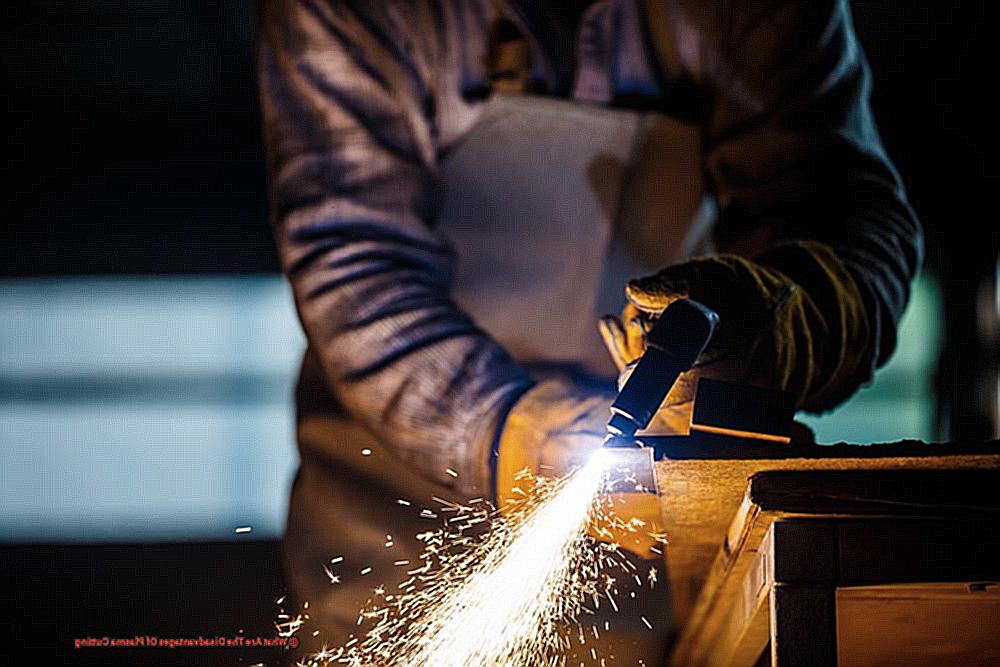
Properly shaping the bead is crucial in this process. It involves controlling the size and shape of the molten metal to ensure a clean and smooth weld. The type of electrode and welding technique used can also affect the shape of the weld bead.
Step 4: Removing Debris and Impurities
Between each pass of welding, excess material must be removed by chipping it off and brushing away any debris or impurities. This helps maintain a clean surface for the next pass and ensures a strong and seamless weld. It also allows for better visibility of the weld area, enabling any necessary adjustments to be made.
In conclusion, creating arc spot welds involves striking an electric arc, moving it to form a bead, shaping the weld bead, and removing debris between passes. This process requires skilled welders, proper equipment, and adherence to welding standards.
What are Weld Washers?
It also entails a deep understanding of the significance behind utilizing the appropriate tools and techniques for each specific welding process. One such tool that is often overlooked, yet plays an integral role in creating robust and precise welds, is the weld washer.
Weld washers, also known as welding washers or spot welding washers, may appear insignificant at first glance, but their impact on arc spot welding is immense. These metal discs are specially designed to establish a stable and consistent electrical connection between the welding electrodes and the workpieces, resulting in a firm and long-lasting weld.
So, what exactly makes weld washers so vital in arc spot welding? Let us delve into their role in detail.
- Conductive bridge: Weld washers act as a conductive bridge between the welding electrodes and the workpieces, providing a path for the electrical current to flow through. This allows for a concentrated application of heat to the desired spot, resulting in a sturdy and precise weld. Without weld washers, the electrical current would disperse, leading to an inconsistent and weaker weld.
- Protective barrier: The intense heat generated during arc spot welding can cause harm to both the electrodes and the workpieces if they come into direct contact. Weld washers prevent this by acting as a protective barrier between them, prolonging their lifespan.
- Variety of sizes and shapes: Weld washers come in various sizes and shapes depending on the specific application and type of welding being performed. This versatility allows for better customization based on the project’s requirements, ensuring an efficient and effective welding process.
- Efficiency and cost reduction: By providing a stable electrical connection, weld washers enable faster and more accurate welding. This reduces the time and resources required for each weld, leading to increased efficiency. They also help minimize wastage by concentrating the heat only on the desired spot, reducing the risk of overheating or burning the surrounding areas.
Should Weld Washers Be Used for All Deck Welding?
The type of metal, welding technique, and even the use of washers can all impact the quality and durability of a weld. While welders often focus on the first two factors, the importance of weld washers is often overlooked. These small metal discs may seem insignificant, but they can make a significant difference in the welding process.
But should weld washers be used for all deck welding? In short, no. Let’s delve into the reasons why.
First, it’s crucial to understand when weld washers are necessary. According to industry standards, weld washers are required when working with metal thicknesses equal to or less than 20 gauge. This is because thin metals are more susceptible to warping and burning during welding. The washer acts as a heat sink, drawing away some of the heat and reducing the energy delivered to the substrate. However, for thicker steel decks, using washers is not recommended.
Why is this? The answer is simple – excessive gaps can occur between the washer and the thicker metal, resulting in an inadequate weld. Additionally, thicker metals can withstand higher temperatures without warping, making the use of a heat sink unnecessary.
But why is understanding heat control crucial in welding? Heat plays a significant role in the strength and integrity of a weld. Without proper control, high temperatures can cause distortion, warping, or even burning through the metal. Weld washers act as heat sinks, reducing the energy delivered to the substrate and helping control heat levels.
In conclusion, while weld washers may not be necessary for all deck welding, they are essential for ensuring high-quality and durable welds on thinner metals. It’s crucial to understand when and why they should be used to achieve optimal results.
What is the Most Common Filler Metal?
With so many filler metals available, it can be challenging to determine the most commonly used one. As an expert in welding, I have delved into this question and found some interesting insights.
Mild steel filler metal is the most widely used type of filler metal in welding. Its versatility and affordability make it a popular choice among welders. It can be used in various welding applications, from automotive repairs to structural welding.
But why is mild steel the top choice for most welders? Firstly, it is readily available and relatively inexpensive compared to other types of filler metals. Additionally, it is easy to work with, making it suitable for both beginners and experienced welders.
Moreover, mild steel filler metal is compatible with different welding techniques like gas metal arc welding (GMAW), shielded metal arc welding (SMAW), and flux-cored arc welding (FCAW). This versatility allows welders to use mild steel in a wide range of projects without having to switch between different types of filler metals.
However, there are instances where mild steel may not be the best option. For example, when working with stainless steel, a stronger alloy with higher tensile strength is needed. In such cases, stainless steel filler metal would be a better choice.
Other commonly used filler metals in welding include flux-cored wires, which are best suited for shielded metal arc welding and gas metal arc welding. These wires contain a flux core that provides protection from atmospheric contamination during the welding process.
Tungsten inert gas (TIG) and plasma arc welding require a different type of filler metal. These methods use non-consumable tungsten electrodes that do not require a separate filler metal. However, if additional metal is needed, a separate filler metal can be used.
What Welding Parameters Should be Used?
When it comes to welding, setting the right parameters is crucial for achieving a successful weld. These parameters, including welding current, arc voltage, travel speed, amperage, voltage, and wire feed speed, play a significant role in the quality and strength of the final weld. In this section, we will delve into each of these parameters to gain a deeper understanding of their significance and how to effectively use them for your next welding project.
Welding Current:
Welding current refers to the amount of electrical energy used during the welding process. This crucial parameter directly affects the heat generated, resulting in a deeper and wider weld. However, excessive heat can lead to burn-through or distortion of the base material. Conversely, insufficient welding current can result in a weak and incomplete weld. Striking the perfect balance for your specific project is essential.
Arc Voltage:
Arc voltage is the electrical potential difference between the electrode and the base material. It plays a vital role in determining the length and stability of the arc, which directly impacts the penetration and profile of the weld. A higher arc voltage creates a longer and more fluid arc, while a lower voltage produces a shorter and more concentrated arc. The ideal arc voltage depends on various factors such as electrode type, welding position, and joint design.
Travel Speed:
Travel speed refers to the pace at which the welder moves along the joint during welding. The ideal travel speed varies depending on factors such as welding technique, joint design, and welding position. Maintaining a consistent travel speed is crucial for achieving a uniform weld.
Amperage:
Amperage measures the flow of electrical current and influences both heat input and melting rate. Higher amperage results in increased heat input and faster melting rate, while lower amperage leads to a slower melting rate. Striking a balance between these two extremes is essential for achieving a sound and smooth weld.
Are Welding Procedure Specification (WPS) Documents Required?
The requirement of Welding Procedure Specification (WPS) documents is a common topic in the welding industry. As an expert in this field, I have explored this subject and found that WPS documents play a crucial role in achieving quality welds and meeting industry standards. Let us delve deeper into the significance and purpose of WPS documents and understand why they are essential for welding operations.
What is a Welding Procedure Specification?
A Welding Procedure Specification (WPS) is an intricate document that outlines specific procedures and guidelines for welding operations. It includes details about the welding process, base materials, joint design, and welding position. The American Welding Society (AWS) and the American Society of Mechanical Engineers (ASME) consider WPS documents essential for ensuring repeatability and compliance with welding codes.
Types of WPS
There are two types of WPS: Prequalified (PWPS) and Qualified (QWPS). PWPS does not require qualification testing, while QWPS requires testing to ensure proper training and repeatability. The primary governing codes for WPS are AWS D1.1, ASME Section IX, and API 1104, which provide guidelines for creating a comprehensive WPS document.
Materials Required for Writing a WPS
Writing a WPS involves gathering crucial materials such as process parameters, material parameters, joint design, cleanliness, pre/post-weld heat treatment, filler metals, and fit-up. A Procedure Qualification Record (PQR) is also necessary to document lab reports and test results. These materials are vital in creating a detailed WPS that guarantees quality welds.
Significance of WPS
The main objective of a WPS is to ensure quality welds by providing clear guidelines for welders to follow. It also helps maintain consistency in welding operations and assists in meeting industry standards. Without a proper WPS document, there is a higher risk of errors and non-compliance, which can have severe consequences for welding operations.
What Inspection is Required for Deck Welding?
As a knowledgeable individual in deck welding, it is vital to comprehend the intricacies of this crucial step in steel deck construction. Welding provides the necessary connections between the deck and supporting beams or joists, ensuring the structural integrity of the overall structure. However, without proper inspection and adherence to industry standards, these welds can fail, leading to safety hazards and structural issues.
There are various types of welding commonly used for steel decks, with arc spot welds being the most prevalent. These welds, also known as “puddle welds,” do not require pre-punched holes in the top sheet like plug welds. Instead, the welding process involves striking an arc on the deck surface and depositing electrode material onto the beam or joist, creating a robust bond between the deck and supporting structure.
The quality of welded connections on steel decks can be impacted by several factors. These include the type of equipment and technique used, as well as the qualifications of the welder. It is crucial to have a qualified welder perform deck welding to ensure proper penetration into the supporting beam or joist and engagement with the deck perimeter.
The American Welding Society Structural Welding Code Sheet Steel (AWS D1.3) outlines methods and qualifications for arc-puddle welding on steel decks. One essential aspect to understand is heat transfer in welding, as any gaps between the deck and beam or joist cannot be bridged with electrode material. To prevent burn-out of thinner decks during welding, weld washers can be used as a heat sink, but they must be carefully selected based on the thickness of the deck being welded.
Proper power settings are also crucial for successful welding, usually requiring 3 to 6 seconds per weld depending on the materials being joined. It is vital to follow the recommended welding procedures and qualifications outlined in AWS D1.3 to ensure high-quality welded connections on steel decks.
What are the Key Take-Away Points?
This form of resistance welding uses high heat and pressure to fuse metal surfaces together, making it one of the most prevalent techniques in the industry. However, to achieve precision and efficiency in the welding process, it is crucial to have the right equipment and materials. A spot welding machine with adjustable settings for amperage and electrode force is necessary, along with quality copper alloy electrodes and clean base metals. Safety measures, such as wearing protective gear and proper ventilation, should also be a top priority as welding involves high temperatures and electrical currents.
Mastering the technique of arc spot welding takes practice and precision. It may seem simple, but it involves applying pressure and electrical current simultaneously for a specific duration. This pressure should be maintained until the metal cools down, creating a strong bond between the surfaces. With proper training, anyone can learn how to perform arc spot welding effectively.
However, it is essential to follow industry standards outlined in AWS D1.3 when performing arc spot welding on deck connections. These guidelines consider factors such as heat transfer and power settings, which can significantly impact the quality of welded connections. By adhering to these standards, we ensure the structural integrity and safety of steel decks.
In conclusion, arc spot welding is a popular and effective technique for fusing metal surfaces together. With the right equipment, materials, and training, anyone can master this technique. However, following industry standards and prioritizing safety measures are crucial for successful welds.
Conclusion
In conclusion, arc spot welding is a remarkable and indispensable technique in the field of welding. Its ability to forge strong and long-lasting bonds between metal surfaces has revolutionized the industry for decades. From its intricate step-by-step process of creating welds to the crucial role of weld washers, we have explored every aspect of this innovative technique.
We have discovered that mastering arc spot welding requires skilled welders, proper equipment, and adherence to industry standards outlined in AWS D1.While it may take practice and precision to perfect this technique, it is achievable for anyone willing to learn.
Through our journey, we have gained a deeper understanding of the importance of using the right tools and techniques for each specific welding process. We have also delved into the complexities of heat control and power settings, essential elements in achieving top-quality welded connections on steel decks.
However, above all else, safety must always be a top priority when performing any type of welding. By following safety measures such as wearing protective gear and ensuring proper ventilation, we can create a safe working environment for ourselves and those around us.
So next time you witness an arc spot weld in action, appreciate the intricate process behind it and its critical role in joining metal surfaces together.
